At the Chippewa Prairie in Minnesota, conservationists are using GPS tracking to gain a better understanding of how an important animal moves on the grassland: Cows.
Cows?
It’s true that radio or GPS tracking is often used to learn more about creatures that move vast distances (like long-billed curlews, birds that migrate thousands of miles) or live cryptic lives (like timber rattlesnakes, hiding in rocky Appalachian cliffs).
But cows? Haven’t people been following cows for thousands of years? What information could a GPS collar provide?
In this case, the cows are collared to learn their hourly movements, to see how they graze and move across a 2400-acre prairie.
In particular, the radio tracking provides information on a land management technique called patch-burn grazing.
Patch-burn grazing is based on the theory that grazing animals follow burns. Instead of fencing or other grazing rotations, cows follow controlled burns that are made on the prairie.
At Chippewa Prairie, land managers are testing the idea that patch-burn grazing will lead to greater diversity – not just of plants, but also birds, butterflies, small mammals and reptiles.
Chippewa Prairie consists of two connected parcels, one owned by The Nature Conservancy and one by the Minnesota Department of Natural Resources. The two have worked closely to jointly manage the property.
It’s one of the largest and most intact native prairies in the state.
Initially, only burning was used. “We realized we were missing something,” says Joe Blastick, prairie ecologist for The Nature Conservancy. “We were getting heavy sweet clover infestations after the burn. We realized that what we were missing was the other main disturbance of the prairie, that being grazing animals.”
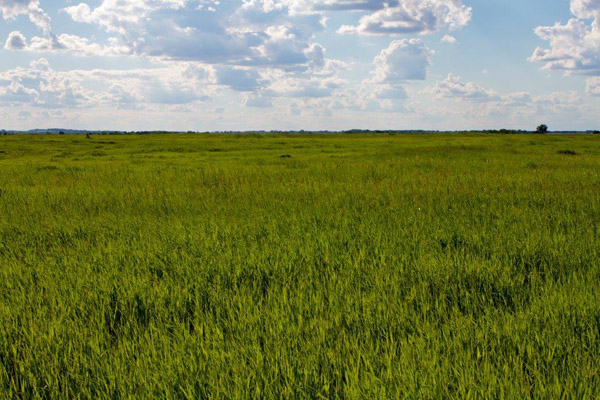
An Intact Prairie with Fire and Grazing
When the decision was made to include cattle as part of the prairie management, the question then became how to contain the cattle. A perimeter fence was erected around the entire preserve.
But conservation grazing often depends on moving cattle – usually through a rotational grazing system that requires moving cows from pasture to pasture. This requires the prairie be divided by internal fences.
“The Minnesota prairie is already fragmented,” says Dave Trauba, ecologist for the Minnesota DNR. “The last thing we wanted to do was fragment it more.”
Trauba noted that lots of fences can create difficulties for wildlife species to move around. It creates habitat for cowbirds, a species that parasitizes the nests of other prairie birds. And prairie visitors don’t want to be constantly climbing over fences.
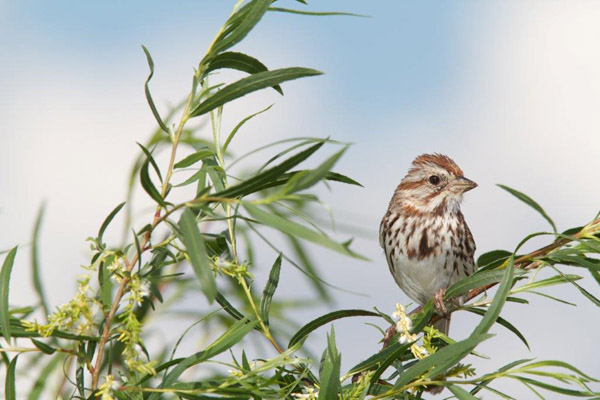
Patch-burn grazing offers the promise of moving cattle without the internal fencing or herding. When the land is burned, new shoots push up — plants that are nutritious and appealing to cattle and other herbivores.
“This is how bison behaved on the prairie,” says Marissa Ahlering, prairie ecologist for The Nature Conservancy. “Research suggests that patch-burn grazing can lead to greater heterogeneity of the plant structure. It concentrates the cows in one area, so you have shorter grazed areas, intermediate areas and areas with very tall plant structure.”
But once the cows are out on the prairie, how can land managers know that they are actually on the burned areas? What if they preferred a sensitive plant habitat instead?
“We can measure the results of the patch-burn grazing on the plant community, but the only way to really see where the cows are is to drive up here and watch them,” says Minnesota DNR’s Trauba. “And that would mean someone would have to watch them all the time.”
Until this year, that is.
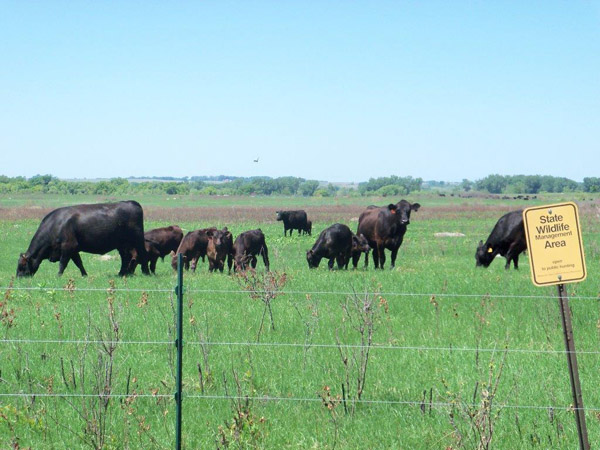
Follow That Cow
Minnesota DNR was conducting an unrelated moose mortality study in the northern part of the state, and had radio collared animals to learn more. Some of the studied moose had died, and their radio collars were sitting on a shelf.
Two mature cows and two heifers were fitted with moose GPS collars (similar to the more familiar radio collars, but these collars use Global Positioning Systems to track movements).
The collars emit signals every hour, giving researchers a complete picture of where cows are spending their time.
The collar’s signal also indicates whether the cow’s head is up or down – useful in determining if a cow is feeding in an area or just passing through.
“Are they grazing at night? Where are they loafing? Are they impacting sensitive wetlands?” says the Conservancy’s Blastick. “We have a tremendous amount of data that will provide a much more complete picture of how cows graze on Chippewa Prairie.”
The cattle were fitted with the collars when they arrived on the prairie in May, and they will remain on until they are moved off the property in September.
This is just one data set in an extensive research program, all designed to measure if patch-burn grazing really does increase plant and wildlife diversity. There are separate monitoring efforts aimed at recording the effects on birds, butterflies, snakes, frogs, small mammals and more.
“If it wiggles, crawls or flies, and lives on the prairie, we have someone studying it,” says Trauba.
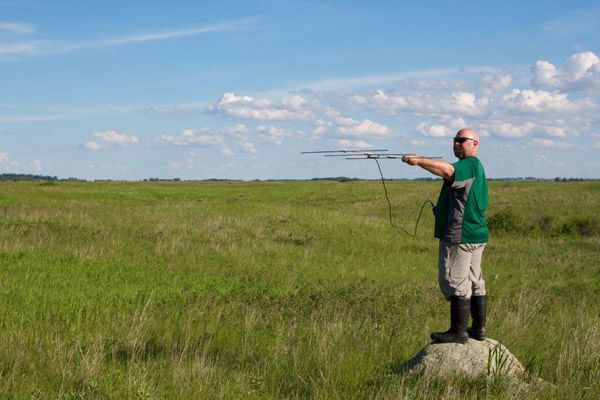
The effort will continue for years to best measure the long-term effects of patch-burn grazing. With bison and cattle increasingly playing conservation roles on prairie preserves, the information here can help inform other land managers.
A similar effort researching patch-burn grazing at the Conservancy’s Tallgrass Prairie Preserve in Oklahoma also collared cows and bison, to learn the differences between these animals following a burn. (The results were published in the journal Ecosphere).
The cows grazing at Chippewa Prairie are serving a double conservation duty. A local rancher grazes the cattle there in exchange for resting his land, what is known as a grassbank.
This allows his intensively grazed land to rest for a year – allowing native plants to bounce back. In return, his cattle have grazing land – and serve a research and restoration purpose – on the Conservancy and DNR properties.
“We don’t graze this prairie for the sake of grazing it,” says Blastick. “We aren’t trying to show that grazing can coexist with native prairie. We’re researching how grazing can best benefit the prairie. Chippewa is one of the best of the best, as far as native prairies in Minnesota. We have the opportunity here to do extensive research that benefits the grassland and its diversity.”
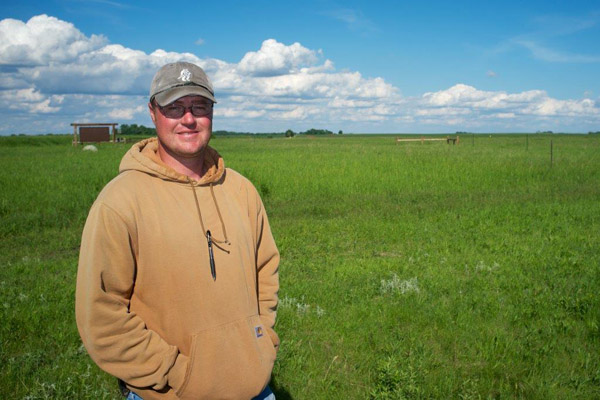
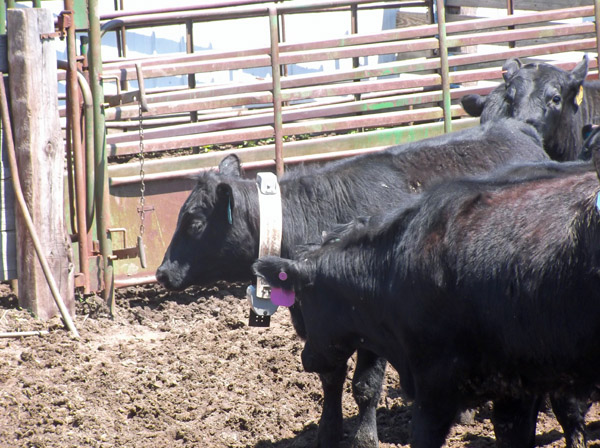



I would like to see TNC follow up this work showing prairie dogs and the black-footed ferret (BFF) also must co-exist with cows or bison on medium and short grass prairies and grasslands for ecosystem health.
The BFF is our most endangered mammal; prairie dogs, the BFF’s primary food, have been maligned by farmers and ranchers and have been poisoned throughout their range, almost extirpating the BFF. These poisonings have occurred on public lands leased at very low cost (<10% retail) by ranchers. For our full ecosystem complement, and to bring back a charming ferret, we must show and support ranching that doesn't kill prairie dogs or the BFF.